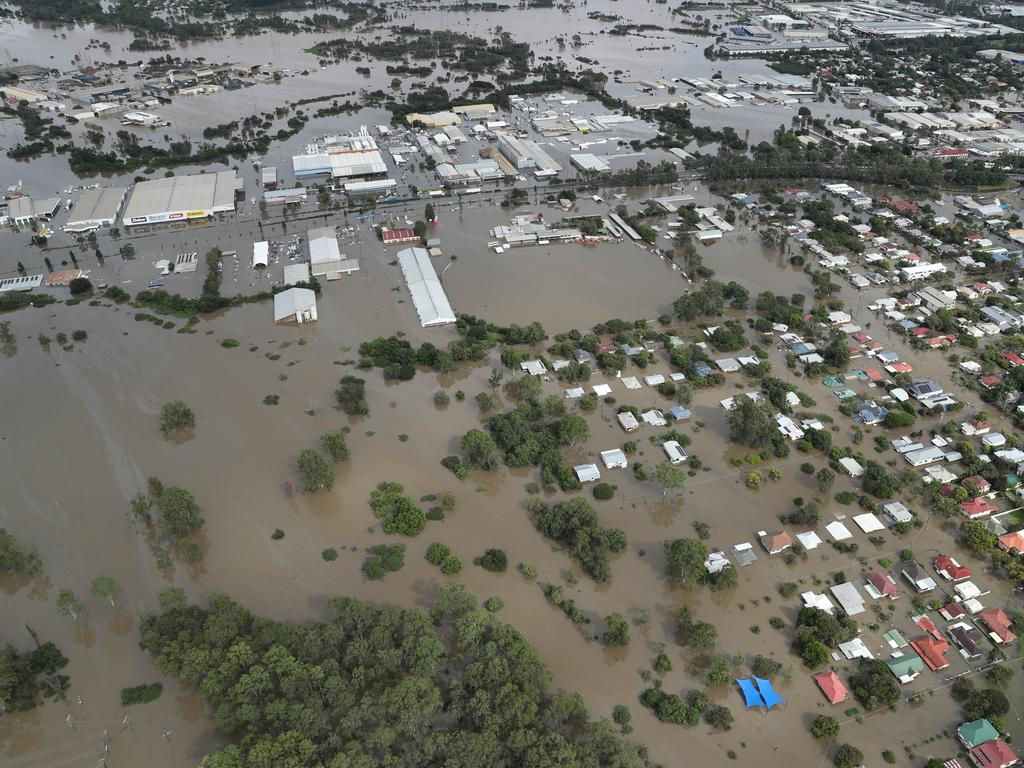Qld floods: Councils slammed over planning laws that allowed some flood-hit areas to have been built on
The Deputy Premier has hit out at local councils, saying some of the flooded areas he’s visited “should never have been built upon”, as he flags changes to some of Queensland’s planning laws in a bid to reduce the risk of a repeat of this week’s devastation.
QLD Politics
Don't miss out on the headlines from QLD Politics. Followed categories will be added to My News.
Deputy Premier Steven Miles has flagged changes to some of Queensland’s planning laws following this week’s widespread flooding, saying some of the flooded homes he’s visited should have never been built.
The Local Government and Planning Minister said he intended meeting with councils to discuss planning approvals for new house developments going forward, given the increased potential for natural disasters in the years ahead.
It followed Premier Annastacia Palaszczuk blaming climate change for the “unprecedented” flooding experienced across southeast Queensland and into NSW.
“Let’s face it, it’s climate change,” she said of the incredible conditions.
Mr Miles said there was “clearly a need for our planning system to properly consider, not just the history of disaster, but the projections going forward of how these disasters are likely to become more often and more severe”.

“And certainly I’m looking forward to talking with local government mayors about how they can incorporate into their planning schemes these likely impacts.
“I have visited flooded areas in recent days that frankly, should not have been built upon.
“And so we need to both address that and work with those residents and councils for how we can mitigate flooding risks for them but also ensure that going forward we’re not building new homes on locations that are prone to flooding or indeed other natural disasters.”
He said it “may well be necessary” to make planning changes.
“That’s an area, as planning minister, I’d like to work with local governments to ensure that we aren’t continuing to build in locations that are likely to suffer from these events.”
Mr Miles toured devastated parts of Ipswich, Brisbane and Logan this week, but it is understood it was flooded Major St – which backs on to a creek at Deception Bay in the Moreton Bay region – that he believed was particularly poorly placed.
Asked about the possibility of government resumptions of flood-prone land, he said that was “not on the cards yet”.
Mr Miles said the insurance council had clarified definitions around flooding since the 2011 flood event.
However, some people would not have been able to access insurance or afford it, particularly in low-lying areas, and they would be at greatest need of support and assistance, he said.
Local Government Association of Queensland chief executive Alison Smith said state and local government planning laws, schemes and regulations had “changed dramatically” since the 2010/11 summer of disasters and the subsequent Commission of Inquiry.
“Developers must now comply with strict rules and mitigation requirements to avoid new developments being impacted by future disasters,” she said.
“Mitigation measures have also been introduced for existing homes such as allowing owners to raise houses above the flood level in certain council areas.
“Councils also include future risk in their planning scheme considerations as a matter of course.
“The LGAQ and Queensland councils look forward to working with the State to identify additional changes that could be applied at a State and council level to further bolster protections for local communities.”



